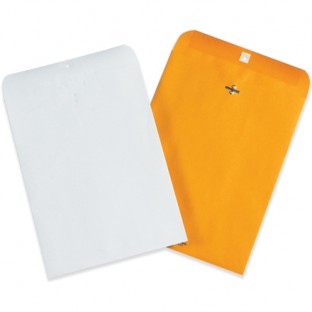 It is easy to oversimplify shipping room supplies into categories like “boxes” and “envelopes” without giving proper attention to the specialized nature of these packages. Boxes come in all shapes and sizes, constructed of standard cardboard and heavy-duty corrugated materials. Tall, flat, long, white, and even purposed for specific contents, boxes are diverse fixtures in any department’s shipping arsenal. Envelopes and mailing bags are found in another category shortchanged by casual observers unaware of the diverse options available to shippers.
It is easy to oversimplify shipping room supplies into categories like “boxes” and “envelopes” without giving proper attention to the specialized nature of these packages. Boxes come in all shapes and sizes, constructed of standard cardboard and heavy-duty corrugated materials. Tall, flat, long, white, and even purposed for specific contents, boxes are diverse fixtures in any department’s shipping arsenal. Envelopes and mailing bags are found in another category shortchanged by casual observers unaware of the diverse options available to shippers.
Mailing Bag Materials
Mailing envelopes are designed to carry flat and nearly flat contents requiring varied levels of protection and security during shipment. To handle a range of commonly shipped items, mailing bags and envelopes are constructed from a variety of materials.
Paper – The industry standard for mailing casual documents and flat parcels, paper is inexpensive and provides adequate protection for a range of printed materials.
Ship Lite Envelopes – Providing about 6 times the level of protection afforded by standard mailing envelopes, Ship Lite mailers are constructed of paper reinforced with durable fibers.
Poly Mailers – Polyolefin construction adds further fortification against moisture and accidental damage during shipping. The material is stronger than reinforced paper and comes in clear varieties that highlight envelope contents.
Tyvek – Known for its highly visible application as house wrap. Tyvek provides high levels of puncture and tear resistance for precious envelope contents. The material is about ten times stronger than paper and provides better protection against moisture than other packaging materials.
Nylon Reinforced Mailers – When padding is not required but extra resistance against tears is desired nylon reinforced mailers provide lightweight alternatives that save on freight costs. Self-sealing and expandable options provide economical protection for flat parcels.
Types of Envelopes and Mailers
Padded – Some mailing bags are cushioned for extra protection, providing shock absorption during transit – especially for items that are not quite flat. Encased in Kraft paper exteriors, fiber padding and bubble wrap serve similar functions in padded mailers, insulating package contents from rough handling. Specialized versions are available with colored plastic film exteriors, as well as metallic silver Cool Shield thermal mailers designed to protect package contents from extreme temperatures.
Expansion Envelopes – Gusseted shippers grow as they are filled with additional documents. The flexible alternatives are constructed from a variety of materials, including those resistant to moisture and punctures.
Extra Long – Long mailers, made of Polyethylene and other materials accommodate artwork, posters and wallpaper rolls during shipment. Legal documents and other extra-long printed materials are also safeguarded in extra-long mailing envelopes.
Tamper Evident – Extra security measures are added to tamper evident mailing envelopes, incorporating verifiable physical features into the seals. Once opened, the mailers cannot be returned to their unadulterated states.
Flat Mailers – Using tabs as closures, flat mailers provide stiff enclosures for documents and photos. Self-sealing options can be re-secured easily, to keep documents secure between viewings. For applications requiring rigid envelope structure and padding, Jiffy Rigi Bags contain both.